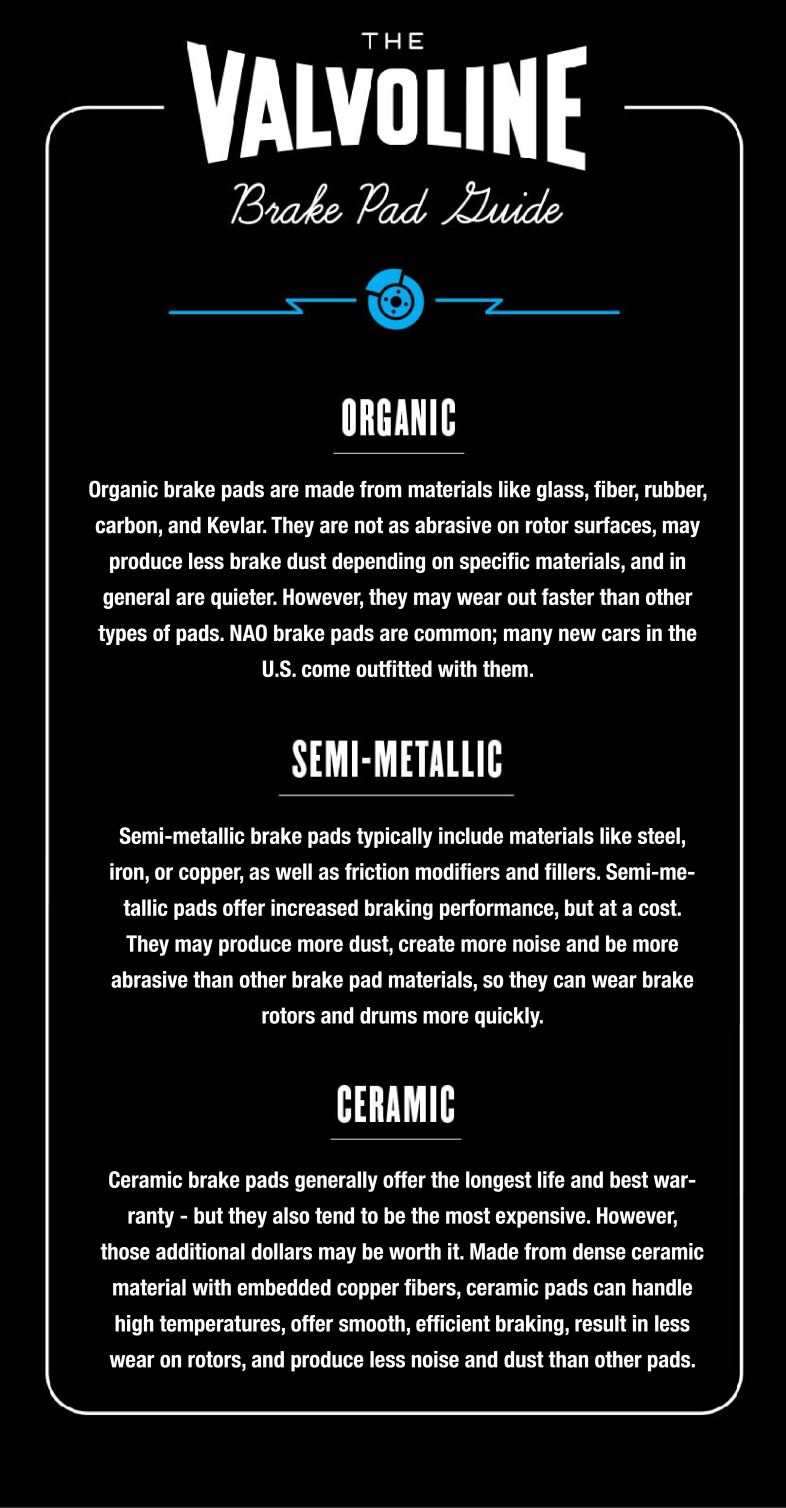
When it comes to replacing brake pads, the answer is not one-size-fits-all. But there are some key tips to keep in mind when helping a customer make a choice for his or her vehicle.
First, some history. Brake pads were once made from asbestos. However, as health repercussions of asbestos became known, manufacturers searched for alternatives. Today there are three main categories of brake pads: “NAO” (non-asbestos organic), semi-metallic, and ceramic. While this isn't an all-inclusive list of brake materials, it definitely covers the ones you're likely to see day-to-day.
As always, check with your manufacturer's specifications. And when selecting brake pads, consider things like the weight of your vehicle, your driving style, and the temperature range in your region all of which may influence your choice between these three main types.
Organic brake pads are made from materials like glass, fiber, rubber, carbon, and Kevlar. They are not as abrasive on rotor surfaces, may produce less brake dust depending on specific materials, and in general are quieter. However, they may wear out faster than other types of pads. NAO brake pads are common; many new cars in the U.S. come outfitted with them.
Semi-metallic brake pads typically include materials like steel, iron, or copper, as well as friction modifiers and fillers. Semi-metallic pads offer increased braking performance, but at a cost. They may produce more dust, create more noise and be more abrasive than other brake pad materials, so they can wear brake rotors and drums more quickly.
Ceramic brake pads generally offer the longest life and best warranty, but they also tend to be the most expensive. However, those additional dollars may be worth it. Made from dense ceramic material with embedded copper fibers, ceramic pads can handle high temperatures, offer smooth, efficient braking, result in less wear on rotors, and produce less noise and dust than other pads.

- Prior to using or installing any of these products always consult your vehicle’s owner’s manual for compatibility and warranty information.
- Always take appropriate safety precautions when working on or operating your vehicle. Take the necessary steps to help prevent injuries; always use protective gear like helmets, safety goggles, and gloves.


Don't miss out on new content
Thanks for signing up. Set your password and start earning reward points for everything you do on the site.
You already have a Team Valvoline account. Sign in here.
Did you forget your password?